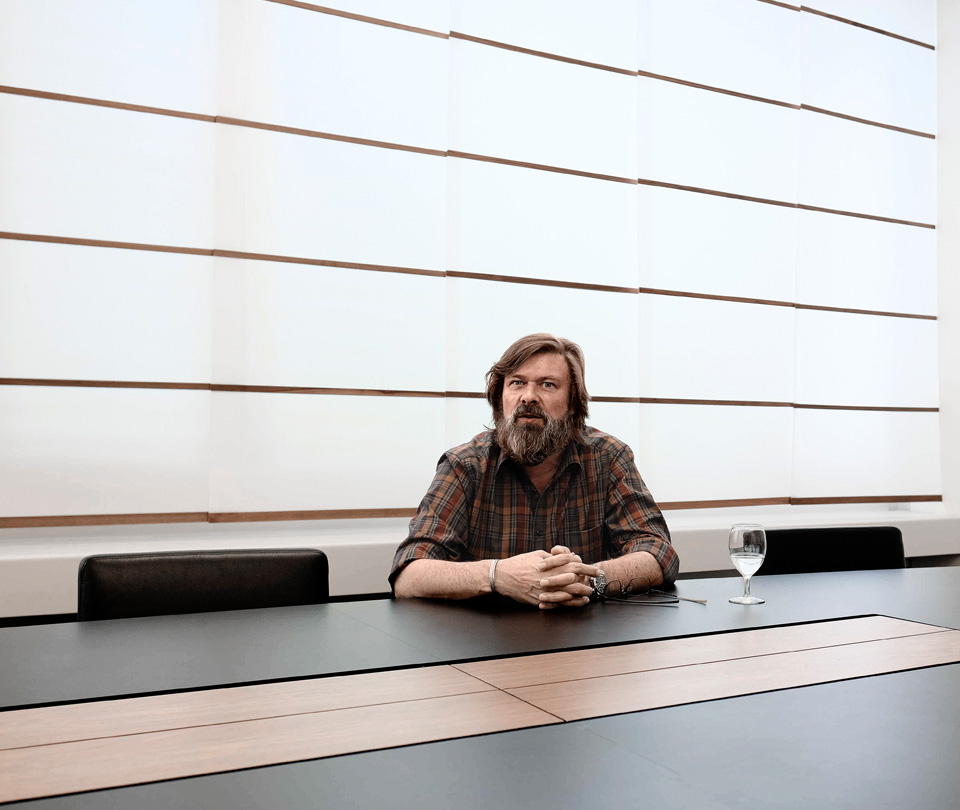
Before you get to work you have to understand how the customer views an image as well as what the image has to say
The life of a person is first and foremost made up of images, because people think and communicate in images. Despite having five senses for perception, humans usually describe a perception or an experience in pictorial language. Images are understandable in all languages. This is why an image is key to every message passed from one person to another. And it’s no different in retailing, where images have always played the key role. What looks good is seen as being better, more valuable and more desirable. Today, the importance of the image is most evident in the world of advertising. No other sector dedicates so much effort to images. Working on the message of an image is a big challenge, says Thomas. From the design and creative possibilities through to the highly complex technical processes involved today.
Interview with Thomas Schärer in 2018, Managing Director of Blue Horizon AG, Urdorf – Thomas Gysin
Blue Horizon AG has made a name for itself in the prepress sector with image processing and composing as well as digital photography and, perhaps alongside two other competitors, is the go-to company in the greater Zurich area. Advertising agencies in particular count on Blue Horizon’s services. Blue Horizon has always been there for them day and night, even on weekends and holidays. For large annual presentations, they have consistently relied on this service, and with lead times continually getting shorter, clients cannot afford to forgo round-the-clock availability.
New IT technology called for smart networking and partnership.
The advent of professional databases demanded an expansion in service ranges. The idea was to enable a wide variety of users to organize, store and retrieve data from the prepress area in every conceivable data format, and to do so for all digital media and also for the classic print sector – in countless languages and on an international level, of course. An internal extension of this service would never have proved a good solution for a company specializing in the classic prepress sector, both in terms of expertise and economic considerations. This was ultimately why Blue Horizon AG sought a partner-based solution. n c ag offered the most ideal solution: a vast range of services in both the digital and traditional print sectors, the infrastructure, IT expertise in smart software solutions, and excellent media asset management. In 2014, the time had arrived for Blue Horizon AG to relocate to Urdorf and become a wholly owned subsidiary of n c ag. Prepress customers now had two advantages: they gained from the first-class, round-the-clock service of the small Blue Horizon and then also from the wide range of services offered by the large n c ag – all à la carte services, naturally, in line with the tag line “publishing at its finest”.
People make the key difference in an operational chain.
“Price is the most important factor” is what you hear almost everywhere today; the price always comes first. Second is the demand for speed, while quality is often not even discussed – until someone notices that there is a lack of it. This attitude is actually paradoxical. With the current level of transparency, the price is the same everywhere apart from marginal differences – assuming you aren’t comparing apples with oranges. The time factor is also the same everywhere in comparison. The only thing that makes a big difference here is availability. Blue Horizon is there for its customers non-stop, around the clock so to speak, over the weekend and also on holidays. This has always been the case and, looking back, he has to laugh, says Thomas, because as soon as the first cell phones came out, he became available to his customers at any time and anywhere. The first of these devices was almost the size of a brick. And he always had it with him, even at night. He’s still on call to the same degree, even to this day. And it was nice to find out that customers who knew that don’t take advantage of him always being reachable. If they call him at odd hours, it’s because they need him.
Finally, there’s the aspect of quality. It is important that everything is right during the entire order process. In many organizations, the job is just passed on from one workstation to the next in an operational chain. A lot of quality gets lost in the process, no one knows why anything was planned or done beforehand, and no one is interested in what is happening at the next station. This is where people make the crucial difference. At Blue Horizon, everybody jointly shares the responsibility for each job; what gets sent out to the customer is the product of the entire team working together on a job from start to finish – the result, ultimately, is quality, first-class quality.
Pictures have to tell stories and they have to be beautiful, that’s what people need.
What makes a beautiful picture? A picture must have a life of its own and be able to involve the viewer in it. The picture should tell the viewer a story, a story they want to experience in some way. So the picture needs natural charisma, it has to be honest with the viewer. Good image editing is therefore an art, and one that calls for a great deal of sensitivity and experience. You can see this, for example, in a person’s face. The image is only beautiful if everything is just right. In terms of image technology, a lot of surgical interventions can be carried out, just as with the digital makeup box. Anyone using this technology without reflection, though, is only harming the image. It’s just so simple, says Thomas with a laugh, you just have to know what people need: beautiful pictures.

Thomas Schärer, Managing Director of Blue Horizon AG
Thomas Schärer was brought up in a world of advertising imagery. His father worked in the advertising department at Knorr, in the days when the iconic Knorrli figure was invented and made world famous. With Blue Horizon AG, Thomas Schärer finally created his very own visual world: with image editing/composing and digital photography. Thomas Schärer is the father of three grown-up children and a devoted collector of motorcycles: “I collect bikes that still run on carburetor engines, ones that work with no electronic injection and no modern frills,” as he proudly puts it.
